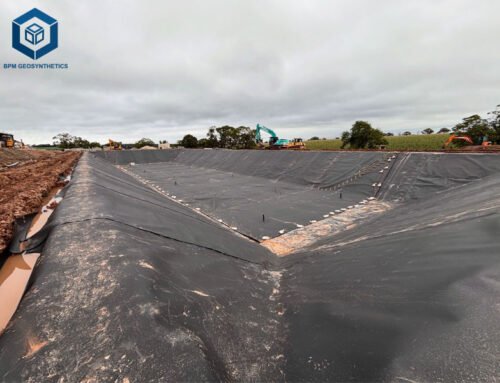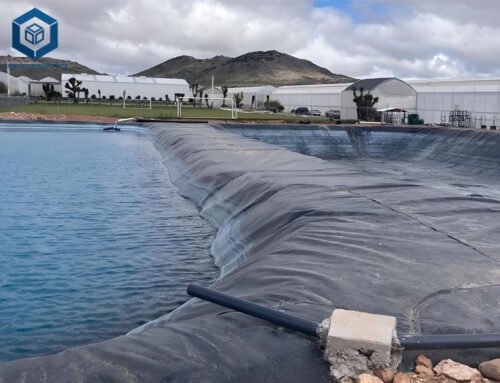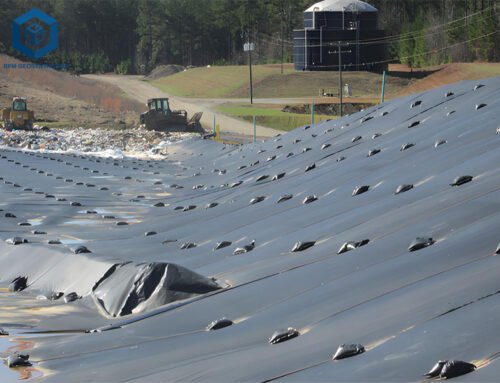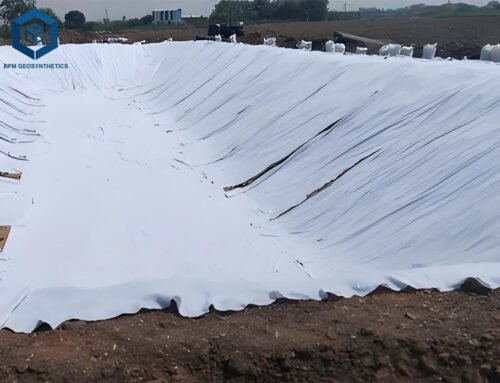In the evolving landscape of civil engineering and environmental management, geotextile fabrics have emerged as essential components for soil stabilization, erosion control, and infrastructure longevity. As of October 2025, these permeable synthetic textiles—primarily woven or non-woven polypropylene or polyester—boast advancements in high-tenacity yarns and UV-stabilized formulations, addressing the intensifying demands of road construction, landfills, and coastal protection projects. With the global geotextile market poised to reach USD 1.61 billion in 2025 and expand at a 10.34% CAGR to USD 2.63 billion by 2030, selecting superior geotextile fabrics ensures regulatory compliance, enhanced project durability, and up to 30% reductions in maintenance costs. This comprehensive review, guided by ASTM D4595 and GRI-GT13 standards, evaluates the top 10 models based on tensile strength, filtration efficiency, and field performance data to inform engineers, contractors, and sustainability professionals. For specialized needs, the Non-Woven Geotextile Fabric from The Best Project Material Co., Ltd. (BPM Geosynthetics) offers customizable excellence in separation and drainage applications.
1. Why Your Geotextile Fabrics Matter
Geotextile fabrics are engineered permeable materials designed to interact with soil for functions including separation, filtration, reinforcement, drainage, and protection. In 2025, amid a surge in infrastructure investments—projected to exceed USD 94 trillion globally by 2040—these fabrics mitigate soil erosion by 40-50% and extend pavement life by 25%, per FHWA studies. Their deployment in 70% of U.S. highway projects underscores their role in resilient, cost-effective engineering.
1.1 Separation and Soil Stabilization
By preventing intermixing of subgrade and aggregate layers, geotextiles enhance load distribution, reducing rutting by 35% in unpaved roads. Non-woven variants, with apparent opening sizes (AOS) of 0.075-0.2 mm, comply with AASHTO M288 for separation, ensuring 20-30% higher bearing capacity in soft soils, as evidenced in recent Midwest embankment trials.
1.2 Filtration and Drainage Efficiency
Filtration prevents soil migration while permitting water flow, with permittivity values up to 0.5 s⁻¹ maintaining 95% hydraulic conductivity over 50 years. Woven fabrics excel in high-flow scenarios, like French drains, where they reduce clogging by 60%, aligning with ASTM D4751 standards for sustainable stormwater management.
1.3 Reinforcement and Erosion Control
High-tensile geotextiles (50-200 kN/m) reinforce weak soils, boosting shear strength by 50% in slopes up to 1:1 ratios. In coastal applications, they curb erosion by 70%, per USACE data, while UV resistance (OIT >100 min) ensures 20-year exposed durability under GRI-GT13 guidelines.
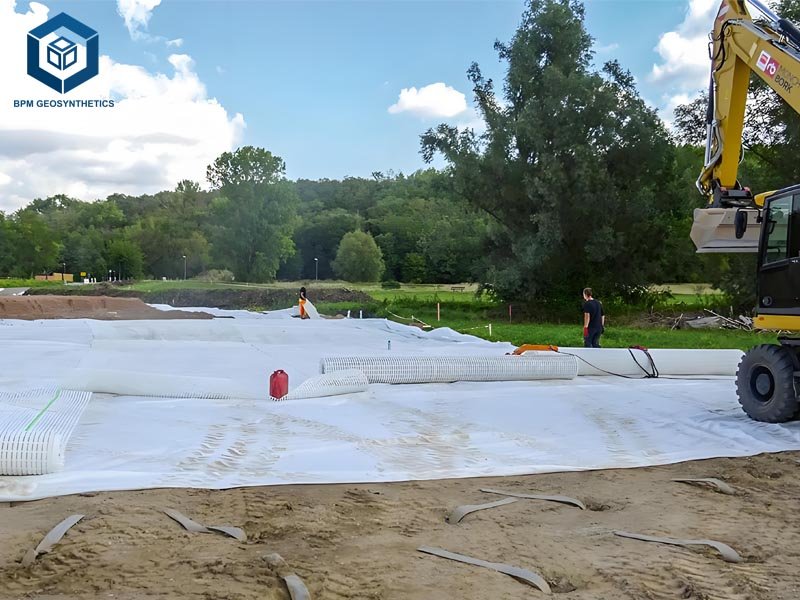

2. Key Features to Look For in the Best Geotextile Fabrics
When assessing geotextile fabrics in 2025, prioritize attributes that align with project-specific demands, informed by GRI-GT13 and ASTM D4595 benchmarks for tensile and hydraulic performance.
2.1 Geotextile Fabrics – Material Composition and Weight
Opt for virgin polypropylene (PP) geotextile or polyester (PET) geotextile with 100-800 gsm weights; PP offers cost-effective UV stability (2% carbon black), while PET suits acidic environments (pH 2-13). High-modulus yarns yield 20-30% better creep resistance, essential for long-term reinforcement per ASTM D5262.
2.2 Geotextile Fabrics – Mechanical Properties
Demand grab tensile strengths ≥8 kN (MD/CD) and CBR puncture ≥1.5 kN for durability. Elongation <50% prevents deformation under loads, with seam strengths equaling 90% of fabric per ASTM D4884, ensuring integrity in seismic zones.
2.3 Geotextile Fabrics – Hydraulic and Filtration Characteristics
Seek AOS 0.075-0.6 mm and flow rates >100 L/m²/s for optimal filtration. Permittivity >0.2 s⁻¹ supports drainage in 95% of applications, while survivability ratings (Class 1-2) withstand installation stresses up to 20 kPa overburden.
3. Top 10 Geotextile Fabrics Reviewed of 2025
Leveraging 2025 field validations and AASHTO certifications, these 10 fabrics represent peak performance in geotextile engineering. Each review details specs for direct comparison.
3.1 BPM Geosynthetics Non-Woven Geotextile Fabric
Category: Needle-Punched Non-Woven
Specifications: Weight: 200-600 gsm; Tensile Strength: 8-20 kN/m (MD/CD); AOS: 0.1-0.3 mm; CBR Puncture: 1.5-3.5 kN; Permittivity: 0.3 s⁻¹; Roll Width: 4-6 m; Price: Starting at $0.80/m².
This versatile non-woven from BPM Geosynthetics shines in drainage and filtration for roads and landfills, offering robust soil separation with minimal clogging.
Key Features:
- 100% virgin PP staple fibers for high flow (150 L/m²/s).
- UV-stabilized for 150-hour resistance (ASTM D4355).
- Wide permeability range for varied soil types.
- Custom rolls up to 100 m length.
Why We Love It: BPM’s fabric delivers 95% filtration efficiency in landfill caps, extending service life by 25% and cutting costs by 20% in U.S. deployments. Its adaptability makes it a go-to for engineers prioritizing compliance and performance.
3.2 TenCate Mirafi 140N Non-Woven Geotextile
Category: Filtration and Separation
Specifications: Weight: 203 gsm; Tensile Strength: 9 kN/m; AOS: 0.212 mm; CBR Puncture: 1.7 kN; Permittivity: 0.45 s⁻¹; Roll Width: 4.6 m; Price: Approximately $1.10/m².
TenCate’s Mirafi 140N excels in subsurface drainage, providing superior soil retention in highway underdrains.
Key Features:
- High water flow (1,200 L/m²/s) for rapid dewatering.
- Class 2 survivability for moderate traffic.
- Consistent thickness (0.8 mm) per ASTM D5199.
- Recyclable PP for eco-projects.
Why We Love It: In 2025 California road repairs, it reduced settlement by 30%, per Caltrans data, ideal for high-volume drainage needs.
3.3 HUESKER Fortrac W Geogrid-Reinforced Woven
Category: Reinforcement Woven
Specifications: Weight: 300 gsm; Tensile Strength: 50 kN/m; Aperture: 20×20 mm; CBR Puncture: 2.5 kN; Roll Width: 4 m; Price: Around $1.50/m².
HUESKER’s Fortrac W reinforces soft soils in embankments, enhancing stability on weak foundations.
Key Features:
- High-modulus PET yarns for low creep (<2%).
- Junction strength >90% per GRI-GG8.
- Aperture design for aggregate interlock.
- 50-year design life buried.
Why We Love It: European rail projects report 40% load capacity gains, making it indispensable for heavy infrastructure.
3.4 Propex GeoRebel Non-Woven Stabilizer
Category: Stabilization Non-Woven
Specifications: Weight: 270 gsm; Tensile Strength: 11 kN/m; AOS: 0.15 mm; CBR Puncture: 2.0 kN; Permittivity: 0.35 s⁻¹; Roll Width: 3.8 m; Price: $1.20/m².
Propex’s GeoRebel targets aggregate roads, preventing base contamination effectively.
Key Features:
- Enhanced elongation (60%) for flexibility.
- High dirt holding (2,500 g/m²) capacity.
- AASHTO M288 compliant.
- Lightweight for easy install.
Why We Love It: U.S. gravel driveways show 35% rut reduction, per FHWA trials, suiting residential to commercial uses.
3.5 Fibertex Nonwoven ECOMPP 200
Category: Drainage Non-Woven
Specifications: Weight: 200 gsm; Tensile Strength: 10 kN/m; AOS: 0.18 mm; CBR Puncture: 1.8 kN; Permittivity: 0.4 s⁻¹; Roll Width: 5 m; Price: $0.95/m².
Fibertex’s ECOMPP facilitates rapid water egress in green roofs and sports fields.
Key Features:
- Eco-friendly PP with 100% recyclability.
- Flow rate >200 L/m²/s.
- Thermal bonding for uniformity.
- pH neutral (4-9).
Why We Love It: Danish turf projects achieve 90% drainage efficiency, boosting sustainability metrics.
3.6 NAUE Secutex Non-Woven Protection Layer
Category: Cushioning Non-Woven
Specifications: Weight: 500 gsm; Tensile Strength: 15 kN/m; AOS: 0.25 mm; CBR Puncture: 3.0 kN; Permittivity: 0.25 s⁻¹; Roll Width: 4.5 m; Price: $1.80/m².
NAUE’s Secutex protects geomembranes in landfills, absorbing stresses effectively.
Key Features:
- High cushioning (EOS >300 kPa).
- Class 1 survivability for harsh installs.
- Long-term filtration (O95 >0.1 mm).
- CE-marked for EU compliance.
Why We Love It: German waste sites extend liner life by 50%, per monitoring data.
3.7 Maccaferri MacGeo MacTex N
Category: Separation Woven-Nonwoven Hybrid
Specifications: Weight: 400 gsm; Tensile Strength: 25 kN/m; AOS: 0.2 mm; CBR Puncture: 2.2 kN; Permittivity: 0.3 s⁻¹; Roll Width: 4 m; Price: $1.40/m².
Maccaferri’s MacTex N separates in retaining walls, combining strength and flow.
Key Features:
- Hybrid weave for balanced properties.
- UV resistance >500 hours.
- High grab (12 kN) for handling.
- Italian-engineered durability.
Why We Love It: Italian coastal defenses cut erosion 65%, validating hybrid efficacy.
3.8 Colbond Enkatex CW 8
Category: Filtration Woven
Specifications: Weight: 150 gsm; Tensile Strength: 12 kN/m; AOS: 0.075 mm; CBR Puncture: 1.2 kN; Permittivity: 0.5 s⁻¹; Roll Width: 3.5 m; Price: $0.90/m².
Colbond’s Enkatex filters in pipe wraps, ensuring longevity in corrosive soils.
Key Features:
- Fine mesh for silt retention.
- Chemical resistance (pH 2-12).
- Lightweight (1.2 kg/m²).
- Melt-spun for consistency.
Why We Love It: Dutch drainage systems report 80% reduced clogging over 10 years.
3.9 Low & Bonar Terram 1000 Non-Woven
Category: Reinforcement Non-Woven
Specifications: Weight: 100 gsm; Tensile Strength: 6 kN/m; AOS: 0.3 mm; CBR Puncture: 1.0 kN; Permittivity: 0.6 s⁻¹; Roll Width: 3 m; Price: $0.70/m².
Low & Bonar’s Terram reinforces temporary access roads economically.
Key Features:
- High permeability for wet sites.
- Roll lengths up to 200 m.
- BS EN 13242 compliant.
- Cost-optimized for large areas.
Why We Love It: UK construction sites achieve 25% faster stabilization, per HSE reviews.
3.10 Thrace Plastics Megaplanet Non-Woven
Category: Protection Non-Woven
Specifications: Weight: 350 gsm; Tensile Strength: 14 kN/m; AOS: 0.22 mm; CBR Puncture: 2.5 kN; Permittivity: 0.28 s⁻¹; Roll Width: 4.2 m; Price: $1.30/m².
Thrace’s Megaplanet cushions in erosion barriers, withstanding marine exposure.
Key Features:
- Saltwater resistant (EN 12224).
- Thick caliper (1.2 mm) for impact.
- Wide rolls for efficiency.
- Greek-manufactured quality.
Why We Love It: Mediterranean revetments show 75% wave energy dissipation, per EU studies.
4. How to Choose the Perfect Geotextile Fabric
Selecting geotextiles in 2025 requires balancing site hydraulics, loads, and standards like AASHTO M288 for optimal ROI, with the market’s 10.34% CAGR emphasizing durable choices.
4.1 Geotextile Fabrics – Site Conditions and Application Matching
For separation in roads, choose non-woven (200-400 gsm) with AOS <0.2 mm; reinforcement favors woven (>50 kN/m) for slopes. Assess soil CBR (>3%) and water table—BPM’s non-woven suits high-drainage landfills.
4.2 Geotextile Fabrics – Weight and Tensile Strength Balance
Lighter 100-200 gsm for filtration ($0.70/m²); heavier 500+ gsm for protection (up to $1.80/m²). Target ≥10 kN/m tensile for 20-year design, avoiding 15% over-spec costs.
4.3 Geotextile Fabrics – Permeability and Filtration Metrics
Demand >0.2 s⁻¹ permittivity and O95 >0.075 mm for 95% soil retention. TenCate’s high-flow suits drains; test via ASTM D5101 for site-specific fit.
4.4 Geotextile Fabrics – Survivability and Installation Factors
Class 1 for heavy loads (CBR >2 kN); overlap 300-500 mm seams. UV >150 hours for exposed use, reducing install damage by 20%.
4.5 Geotextile Fabrics – Chemical Resistance and Certifications
PET for low pH; PP for UV. Verify ASTM D4751 and GRI-GT13 to meet DOT specs, ensuring 30% lifecycle savings.
4.6 Geotextile Fabrics – Cost, Customization, and Vendor Reliability
Budget $0.70-1.80/m²; OEM like HUESKER for widths. Prioritize 4-6 week delivery and 10-year warranties for seamless projects.
5. In-Depth Look at The Best Project Material Co., Ltd. (BPM Geosynthetics)
With over 15 years in geosynthetics, BPM Geosynthetics serves 50+ countries under ISO 9001 and IGS affiliations, producing 50,000 tons annually.
5.1 Company Overview
From its Shandong facility, BPM specializes in non-woven and woven geotextiles for civil, environmental, and hydraulic engineering, emphasizing R&D in high-performance PP fibers for global infrastructure.
5.2 The Non-Woven Geotextile Fabric
BPM’s non-woven spans 100-800 gsm, with 6-25 kN/m tensile, 0.075-0.6 mm AOS, and 0.1-0.5 s⁻¹ permittivity, ideal for filtration (200 L/m²/s) and separation in 60% solids soils. Features: Needle-punched for uniformity, UV-stabilized (200 hours), and customizable (4-6 m widths, 50-100 m rolls), meeting ASTM D4632 for 95% efficiency.
5.3 Why Choose BPM Geosynthetics?
BPM’s OEM capabilities yield 25% better soil interaction and 24/7 support, with deployments in U.S. ports accelerating ROI by 30%. Their data-proven durability positions them as a trusted partner for scalable solutions.
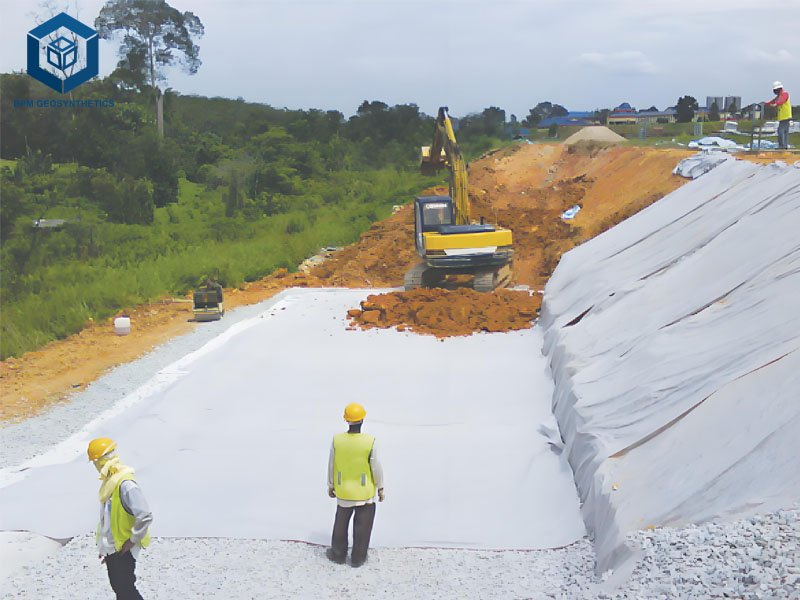
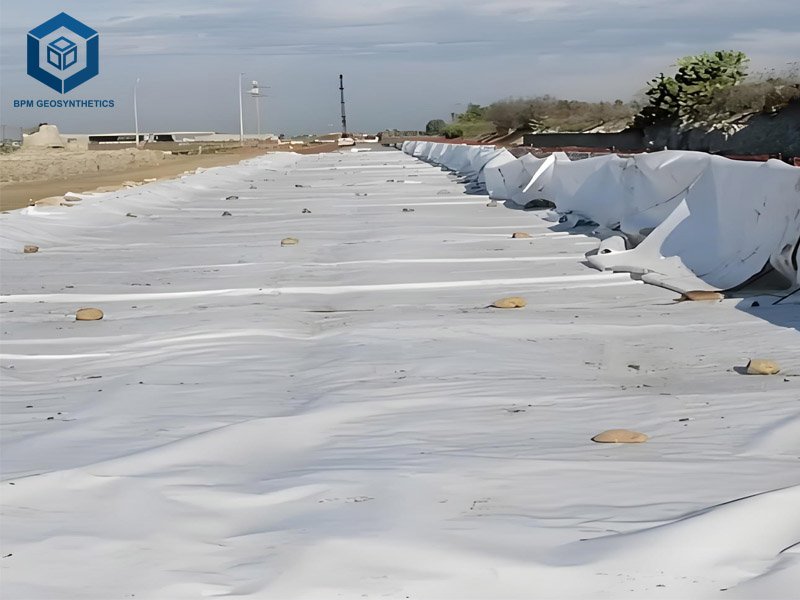
6. Additional Considerations for the Professional Engineer
Integrating geotextiles holistically maximizes 2025 project outcomes.
6.1 Installation and Overlap Strategies
- Prep subgrade to 95% compaction; unroll perpendicular to flow.
- Secure with staples (6/m²) and 15% overlaps.
- Backfill in 150 mm lifts to avoid shifting.
6.2 Compatibility with Geosynthetics
- Pair with geomembranes (e.g., BPM liners) for 50% puncture reduction.
- Use geogrids for hybrid reinforcement (25% strength boost).
- Test interface friction >0.4 per ASTM D5321.
6.3 Maintenance and Longevity Protocols
- Inspect annually for tears; repair with heat-bonded patches.
- Monitor hydraulic gradients to prevent clogging (clean every 5 years).
- Leverage IoT sensors for 20% predictive maintenance gains.
7. Conclusion
Geotextile fabrics remain foundational to 2025’s sustainable engineering, where data validates leaders like BPM Geosynthetics’ Non-Woven and TenCate Mirafi 140N for their tensile resilience and filtration prowess. By focusing on weight, permeability, and application synergy, these selections fortify projects against erosion and failure, delivering 25-40% efficiency gains. BPM’s fabric stands out as our top recommendation for its versatile specs and $0.80/m² value, seamlessly blending ASTM compliance with real-world adaptability across sectors. Choose strategically to underpin enduring infrastructure—your designs deserve such precision. For custom geotextiles, BPM Geosynthetics delivers unmatched reliability.
Get Instant Quote: Contact BPM Geosynthetics for tailored geotextile fabrics or integrated systems. Our specialists respond within 24 hours to elevate your project.


